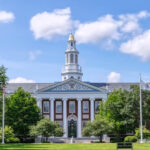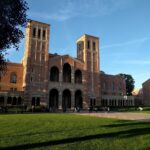College Indoctrination Hits a Wall
College faculties may be further to the political left than they have ever been but students aren’t necessarily following in the same direction.
“In 1971 National Review published the results of a poll of undergraduates at twelve American campuses in 1969-1970,” George H. Nash wrote in his book The Conservative Intellectual Movement in America Since 1945. “The results were deeply disheartening to conservatives.”
The NR poll found that:
- “Three-fifths [of the respondents] call themselves political liberals, fully 17 % are self-proclaimed radicals.”
- “Almost half favor the socialization of all basic industries”
- “Just over half believe that organized religion is harmful or worse.”
Since then, as we’ve reported, some of the “self-proclaimed radicals” have gone on to teach. “Accuracy in Academia has found that 25 percentof the National Council of Students for a Democratic Society has either worked in academia, guest lectured there or written textbooks,” I wrote in the September 2010 issue of AIA’s monthly Campus Report newsletter.
Flash forward four decades. This year, the libertarian Reason magazine polled millennials between the ages of 18 and 29 and reported that:
- 69 percent say it is government’s responsibility to guarantee everyone access to health care and 51 percent have a favorable view of the Affordable Care Act
- 68 percent say government should ensure everyone makes a living wage
- 66 percent say raising taxes on the wealthy would help the economy
Oddly, that same poll revealed that:
- 73 percent of millennials favor allowing private accounts for Social Security; 51 percent favor private accounts even it means cutting Social Security benefits for current and future retirees because 53 percent of millennials say Social Security is unlikely to exist when they retire
- 64 percent of millennials say cutting government spending by 5 percent would help the economy
- 59 percent say cutting taxes would help the economy
Even with the contradictory responses, it is a wonder that students hold any conservative political positions. Efforts to indoctrinate must have hit a brick wall with the 33 percentwho give consistently conservative answers.
Nevertheless, whether it’s 1971 or 2014, there is one constant: Where conservative sentiment does exist on campus, it has a distinctly libertarian flavor. “This purity was probably one source of the movement’s appeal to the young,” Nash wrote. “For radical libertarianism (or anarchism, or radical capitalism—the names seemed interchangeable) drew most of its support not from established right-wing intellectuals but from college students.”
“On the campuses the phenomenon often had cultic dimensions—for example, the eager following acquired by Ayn Rand and by the science fiction novelist Robert Heinlein, and the proliferation of buttons, sweatshirt, and posters, some having the words ‘laissez-faire’ superimposed on a red clenched fist.” Today, the buttons, sweatshirts and posters may have faded and Heinlein may be forgotten, but Rand certainly is not.
Moreover, the Republican presidential candidate most popular with college students, in 2008 and 2012, was Ron Paul.
Déjà vu on Bias
Even those of us who track academic bias on a daily basis can sometimes forget just how deeply embedded it is in university life.
“How does it happen that in the history department to which I belong, out of over fifty faculty members, only one is an identifiable Republican?” Stephen J. Tonsor asked in the Spring, 1970 issue of the Intercollegiate Review. “I believe…that a process of selection and exclusion has been at work for nearly sixty years which has now produced a marvelous homogeneity of viewpoint.”
Homogeneity or hegemony? Tonsor taught at the University of Michigan. George H. Nash recaptured the quote in his book The Conservative Intellectual Movement in America Since 1945.




